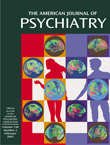How do we find our way through complex environments? How do we perceive, act on, and remember the objects located around us? The amazing ability of spatial cognition is one of the most fascinating topics of cognitive neuroscience and—as is stated by the editors of this book—far outstrips those of man-made devices. During the last decade, scientists from different areas of research including neuropsychology, brain imaging, neurophysiology, and computer science have been inspired by these questions and have successfully shed light on the complex mechanisms that enable the adequate processing of spatial information.
The Hippocampal and Parietal Foundations of Spatial Cognition is based on the proceedings of a Royal Society discussion meeting that took place in March 1997 in London and brought together an international selection of the leading groups in this area of research. Accordingly, the approaches and methods presented have a strong interdisciplinary aspect and cover behavioral studies in individuals with brain lesions, functional brain imaging, computer simulation, and recordings of the electrical activity of single neurons.
Several neuroanatomically distinct brain regions have recently been implicated as involved in spatial perception and action, including parts of the prefrontal lobe, the parietal cortex, and the hippocampus. The present book focuses mainly on the role of the latter two brain regions in spatial cognition. Thus, the three main sections of the book are Parietal Cortex, The Hippocampal Formation, and Interactions Between Parietal and Hippocampal Systems in Space and Memory. Each section consists of six to eight chapters that present and review recent empirical data encompassing various aspects of the main topic.
The chapters themselves are mostly clearly written and highly interesting each in their own right. Before the reader plunges into the details, however, the introductory chapter offers the opportunity to refresh relevant neuroanatomical knowledge. Furthermore, this introduction gives a concise overview of fundamental aspects of spatial functions of the parietal lobe and the hippocampal formation as well as the functional relationship between the two structures with respect to spatial cognition. It thus excellently prepares the reader for the study of the following sections.
The Parietal Cortex section contains papers on the effect of damage to the parietal lobes and the neural mechanism of the parietal representation of space. It appears that the core function of the parietal cortex in spatial cognition is the constitution of “egocentric” spatial frameworks. In simple terms, this means frameworks that move with the body as it moves through the environment. This central hypothesis is illustrated and exemplified by, among others, studies on humans suffering from disorders of spatial orientation and visual or spatial neglect as well as a fascinating neural network model of the posterior parietal representation of space that is used to “mimic” the “symptoms” of hemineglect.
The section on The Hippocampal Formation focuses on its role in spatial cognition and derives evidence mainly from single-unit recording in freely moving rats and from studies on individuals with brain damage. Once again, I thought that the studies on the spatial function of the hippocampus in humans using experimental neuropsychological paradigms and/or functional brain imaging were most fascinating. In addition, the animal experiments presented provide exciting insights into the neurophysiological basis of spatial orientation. One intriguing example is the existence of so-called place cells and head direction cells in the rat hippocampus, which respond only when the rat is in a particular place or facing a particular direction. Together, both form a kind of “cognitive map” of the animal’s location and orientation in its environment. In summary, the research presented in this section strongly supports the hypothesis that the hippocampal formation not only plays an important role in episodic and spatial memory but also provides a neural substrate for the representation of spatial location within an “allocentric” frame of reference (i.e., frameworks that are fixed to the environment itself or to the individual object).
The final section of the book tries to integrate the hypothesis derived from the preceding sections. The main question is, How do the parietal cortex and the hippocampus cooperate to master the requirements for spatial orientation? The preliminary answer is based on an earlier hypothesis developed by Ungerleider and Mishkin, who stated that visual information is processed along parallel ventral and dorsal streams, which are concerned, respectively, with what objects are present and where they are. Taking into account the empirical evidence derived from the Parietal Cortex section of the book, the chapter authors hypothesize that the parietal cortex, as part of the dorsal stream, codes for the spatial location of objects in an “egocentric” framework (appropriate for orienting the body or hands to a particular object, for example). The hypothesis is extended by considering that hippocampal and parahippocampal structures, at the meeting point of both streams, might be concerned with the representation of object locations within an allocentric framework (appropriate for encoding the relative position of relevant objects, for example). Only a close cooperation of both systems would enable the individual to “overlay” and integrate the relevant egocentric and allocentric frameworks. This is the most important prerequisite for performing many of the complex spatial tasks successfully. The results of the chapters presented in this section—approaching the subject again from different methodological angles—convincingly support the proposed integrative model of spatial cognition.
In conclusion, this is a well-written and intriguing book about one of the most fascinating research topics in cognitive neuropsychology. It should be of interest for students of cognitive neuroscience who are looking for an ambitious introduction into this field of science, and equally so for advanced researchers. Further, the thorough and extensive subject and author indexes permit its use as a comprehensive reference tool for readers who do not have the time to study it from cover to cover.

